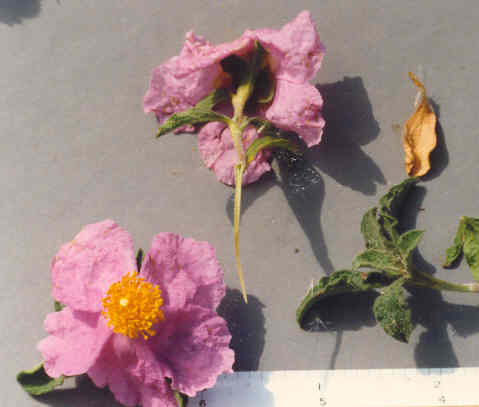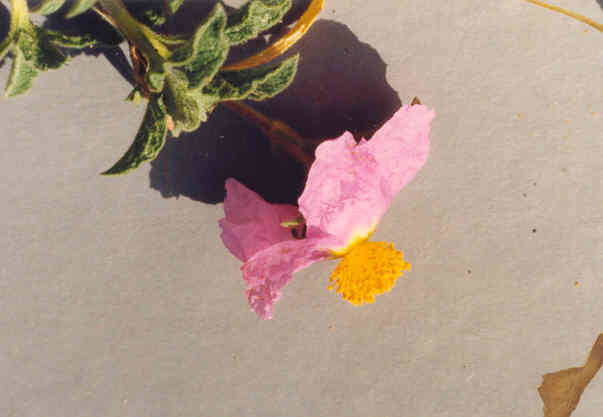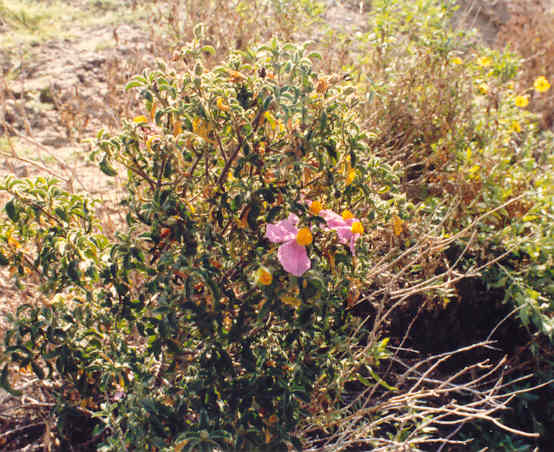
Cistus creticus L.
=Cistus incanus ssp. creticus
Cistus villosus
Cistaceae (Rock Rose Family)
Mediterranean Region
 |
Cistus creticus L.=Cistus incanus ssp. creticusCistus villosusCistaceae (Rock Rose Family)Mediterranean Region
Rock Rose |
March Photo
Plant Characteristics:
Erect shrub ca. 1 m. high; lvs. opposite, ovate to ovate-oblong, 3-7 cm.
long, twisted and wavy, well haired with stellate and straight hairs above and
more densely below, somewhat gray-hairy, net veined, not three veined, the edges
revolute; petioles winged near the base, almost clasping the stems, the petioles
on younger shoots appressed to the stems, the petioles white hairy with stellate
and straight hairs; fls. 1-4, 3.5-4.5 cm. across, rose pink, the yellow bases
forming a yellow center to the flower beneath the orange mass of stamens; sepals
5, ovate, acuminate, 13-14 mm. long; caps. oblong-globose, ca. 1 cm. long; seeds
brownish, shining. Much of this
description by John Johnson, the rest from Munz, and Bailey.
Habitat:
About 20 species in the Medit. region; several in cult.
Name:
Cistus is an ancient Greek
name. Villosus
means "hairy." (Dale 99).
Incanus: hoary. (Bailey
16). Creticus: of Crete, (Bailey
13).
General:
Uncommon in the study area, found only on the Jamboree Road bank where I
suspect it was planted. (my
comment). The
myrrh brought by the Magi to Bethlehem was a fragrant gum resin from C. villosus. It may
still be obtained today in specialty shops to add long-lasting scent to dried
flower mixtures. (Dale 99).
Shrubs or woody herbs, about 8 genera and 160 species, native mostly in
the northern hemisphere, a few planted for ornament.
(Bailey 679).
Text Ref:
Bailey 680; Bailey, Hortus Third 274; Hickman, Ed. 516; Munz, Flora So. Calif.
370; Roberts 20.
Photo Ref:
May 2 87 # 2A,3A,4A; Feb-Mar 88 # 18,19,20.
Identity: by R. De Ruff, confirmed by John Johnson & Fred Roberts.
First Found: May 1987.
Computer Ref: Plant Data 349.
Have plant specimen.
Last edit 3/4/05.
 |
 |
March Photo March Photo